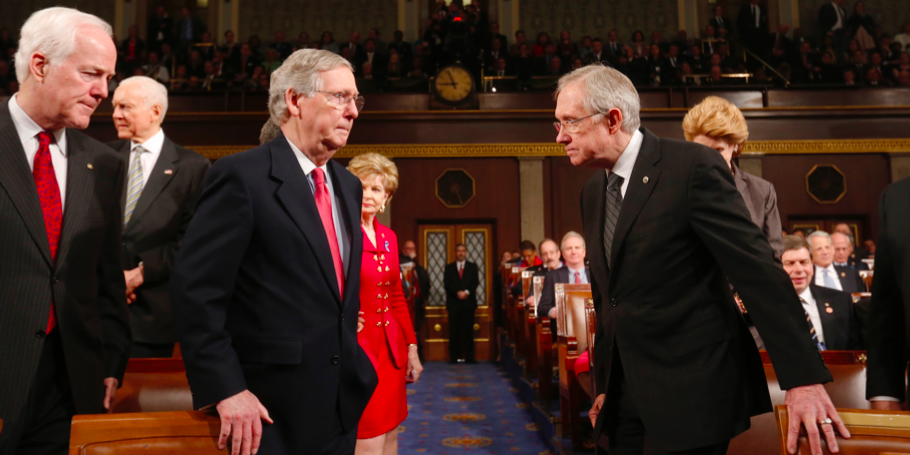
Photo courtesy of Brookings Institution
One of the most pressing issues facing Capitol Hill is the fate of the filibuster. Broadly, the filibuster is a rule implemented in the U.S. Senate that allows for unlimited debate — a tactic used to delay voting on a specific matter by requiring at least 60 votes supporting the bill in question. The majority leader can choose to throw out the issue entirely or file a motion to invoke cloture, ending debate and moving to vote. Most recently, the filibuster was used to block Democrat-backed voting rights acts.
Now, the Democrats have found themselves at a do-or-die scenario: a thin majority alongside the reintroduction of the long-debated and controversial filibuster. If the U.S. is to maintain peace between both sides of the aisle, the Senate must revert back to the talking filibuster rather than the silent filibuster. Although senators can use the talking filibuster to give lengthy speeches in order to divert from the topic on the table, the rule gives each side a total of 20 hours to debate before requiring them to come to a vote.
When considering how the U.S. can implement the talking filibuster to protect democracy rather than undermining it, it’s important to understand the historical context of the policy. The filibuster was created in 1917 during World War I (WWI) to advance an anti-war agenda. It reformed the Senate’s initial rules of unlimited debate, but required a two-thirds majority vote to invoke cloture. At the beginning of the Civil Rights Movement, the filibuster turned into a last resort for Southern Democrats, an attempt to preserve racist practices in their state. After it was lowered to a three-fifths majority to in 1975, the filibuster became used more frequently.
In 2013, Democratic Senator Harry Reid reduced the filibuster to not include presidential nominations other than the Supreme Court. Five years later, Republican Senator Mitch McConnell reduced it even more to not include Supreme Court nominees, which resulted in Former President Trump P ’00 packing the court with three conservative justices. The cloture motion was initially only filed a few times per year, but in 2021 alone, the motion has been filed close to 200 times — often by the Republican Party to reject legislation they disagree with without voting on it, as in the most recent case.
Currently, any senator may stand up when the majority leader asks for unanimous consent to end debate by saying “I object.” Then, the senate floor enters debate over the issue until a motion is filed for cloture, which must pass with 60 votes. The filibuster rule does not apply to the Senate confirmation of executive branch positions and supreme court nominations, as well as certain types of legislation like budget reconciliation, trade agreements, military base closures, and arms sales.
Following the recent incident, the Democrats have increased support for a modification to current filibuster policy — now, this push must continue.
By keeping the filibuster in place as is, we risk stripping Americans of their right to vote. In the long term, the policy allows a singular senator to completely shut down a piece of legislation. Yet, completely abolishing the filibuster would allow the party with the majority in the Senate to pass as much legislation as possible. This goes against the founding fathers’ ideals and George Washington’s famous words, “the House of Representatives pours legislation into the Senatorial saucer to cool it.”
Therefore, the only logical, middle-of-the-road solution to keep the legislative branch of the U.S. government a representative democracy is to revert back to the talking filibuster. If we do this, it will require the party who declares the filibuster to hold the floor of the Senate. As soon as they leave the floor, the Senate goes straight to voting on the bill, only requiring a simple majority. In essence, the talking filibuster would restore balance to the Senate and fulfill its role in deliberating and debating potential solutions to the nation’s biggest challenges.
This minor rule change will reduce the number of filibusters declared and allow legislation to be passed much faster than the two-track system currently in place. Additionally, restoring the filibuster would return debate to the public eye. American democracy depends on voter transparency. Yet today, voters rarely see the Senate enacting change — other than a few bills and amendments on the floor, the Senate’s gridlock has forced all negotiations behind closed doors. Through the talking filibuster, the Senate can hold the floor to explain their positions to the American people.
In order to achieve this rule change, the Senate needs 50 votes plus Vice President Harris’s tie-breaking vote. Right now, all Democratic Senators have expressed some support for this except Senator Sinema of Arizona.
If Democratic leaders can convince Sinema to vote along with this rule change, the Democrats have a chance of passing voting rights legislation without risking it being reverted as soon as they lose their thin majority.




